Uneven metal surfaces, burrs, edges, and inconsistent patterns are the main challenges the engineers face. During metal cutting, they lost a costly material as a byproduct. Thus, it increased project costs. Ultimately, all these lead to frustration in handling a large project.
Well, metal etching is a special technique that eliminates all these problems. Using a control chemical can achieve a clean, repeatable pattern on metal. The etching process follows a specific pattern to minimize waste.
Read the blog to understand the science behind metal etching, its specific techniques, and the suppliers that offer these services. So, close the other tab to focus fully.
What is Metal Etching and How Does It Work?
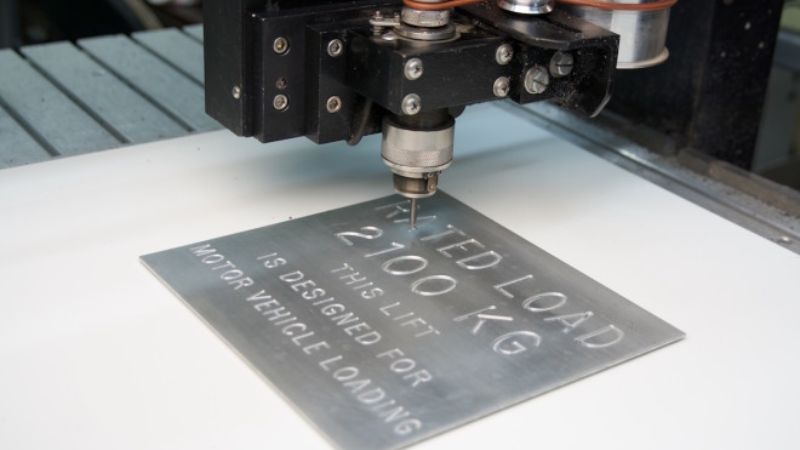
Metal etching is both a precise science and a skilled craft. Basically, it involves removing material from a metal surface in a controlled way. The process depends on the chosen technique.
Chemically, the metal etching uses acids and etchants to dissolve the metal-specific area. The depth and clarity of the etch depend on your project requirements.. The science behind etching ensures consistency in the whole process.
It enables engineers to achieve tolerances and feature sizes that traditional methods cannot. At the same time, the art comes from understanding how each metal interacts with etchants and how resist patterns behave. Therefore, it ensures precise, repeatable, and high-quality results.
What are the Different Types of Metal Etching Techniques
Technically, you can perform metal etching using different techniques. Each technique suits different metals and tolerances. Mostly, engineers choose the metal by considering the material type and precision requirements. Here are the details about the types of metal etching.
Chemical Etching

The chemical etching is also known as wet etching because engineers use acid. They selectively remove metal from exposed areas. A resist material protects areas that should remain intact. The process begins with surface cleaning. Then, expose the material in an etchant bath. You have to monitor the reaction time, temperature, and etchant concentration.
Specification of the chemical etching:
- Materials: Copper, brass, aluminum, stainless steel
- Typical Tolerances: ±0.05–0.1 mm
- Advantages: High surface quality
Electrochemical Etching
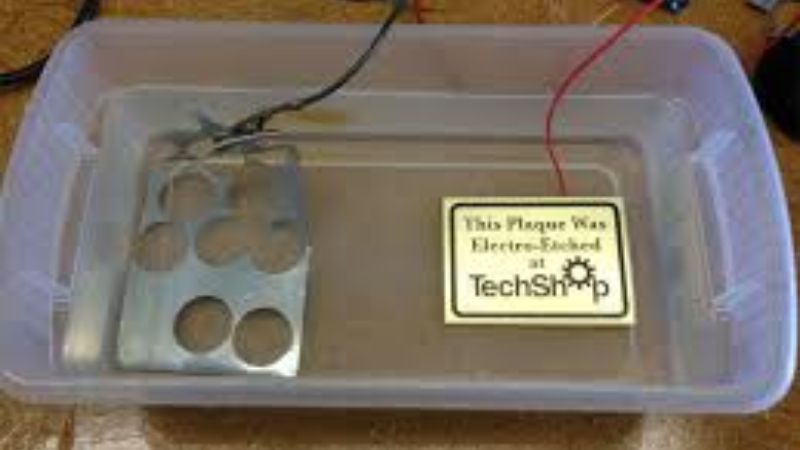
This type of metal etching uses an electric current in a conductive solution. In just a few seconds, it removes metal in exposed areas. The metal acts as an anode, and the etchant completes the circuit. This technique offers precise control over etch depth. It’s especially effective for stainless steel because the chemical etching alone is slow.
Specifications of electrochemical etching:
- Materials: Stainless steel, aluminum, copper
- Typical Tolerances: ±0.03–0.08 mm
- Advantages: Minimal edge undercut
Laser Etching & Engraving
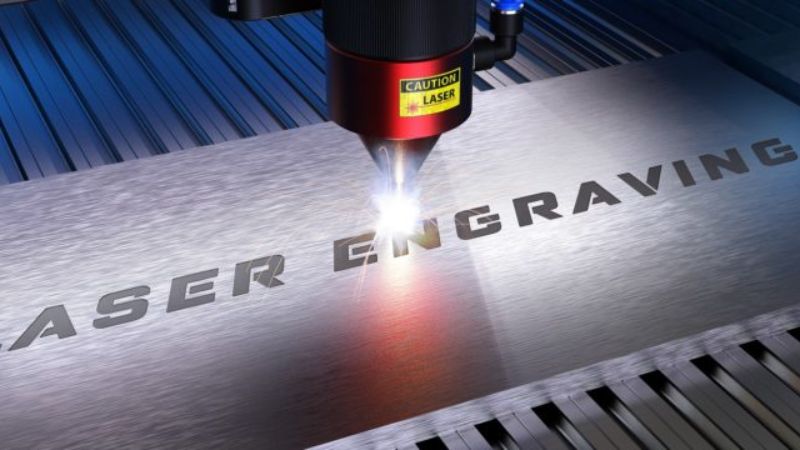
In laser etching, the engineers use a focused laser beam to oxidize the metal surface. It is a non-contact method to produce fine detail. You can achieve micro-scale patterns for small-batch production. The laser beam power, speed, and focus determine etch depth and resolution.
Specifications:
- Materials: Stainless steel, aluminum & copper
- Typical Tolerances: ±0.02–0.05 mm
- Advantages: Flexible designs
Photochemical Etching
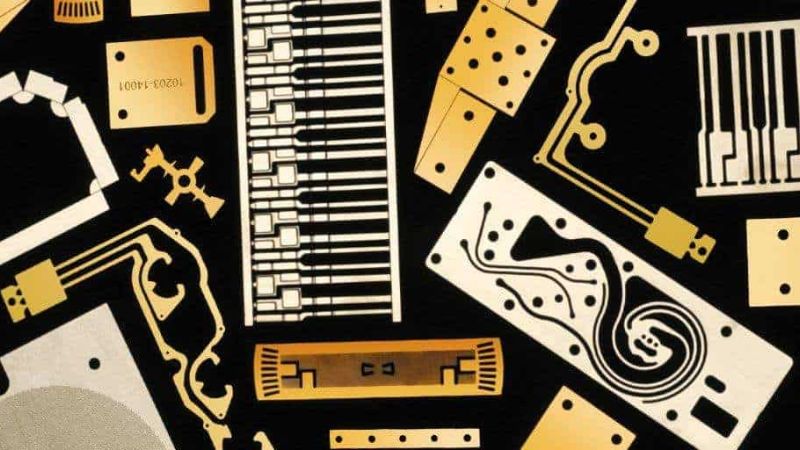
It uses photoresist and ultraviolet light on the metal surface. The exposed areas are developed with the chemically etched. This process is capable of producing extremely fine features. Thus, it is ideal for electronics, aerospace components, and decorative metalwork.
Specifications of photochemical etching:
- Materials: Copper, brass, aluminum, stainless steel, silver
- Typical Tolerances: ±0.01–0.05 mm
- Advantages: Excellent reproducibility
Materials Suitable for Metal Etching
There are different types of material used in metal etching. Each material has its own hardness, tolerance, and thickness. The selection of the best material depends on your design pattern and, of course, your budget.
| Metal | Hardness (HV) | Typical Thickness (mm) | Surface Finish | Etching Tolerance (mm) | Etching Characteristics |
| Copper | 50–120 | 0.05 – 3 | Smooth | ±0.05 | Excellent etch clarity |
| Brass | 70–200 | 0.1 – 3 | Smooth to slightly rough | ±0.07 | moderate etch rate |
| Stainless Steel | 150–250 | 0.1 – 5 | matte | ±0.1 | slower etch rate |
| Aluminum | 30–100 | 0.05 – 5 | Smooth, anodized possible | ±0.08 | easy to etch chemically |
| Silver | 50–150 | 0.05 – 2 | Polished | ±0.05 | reacts quickly with etchants |
Choosing the Right Type of Etching Technique-Which is Best for Your Project?
The selection of the right type of metal etching technique totally depends on your project’s pattern complexity and cost. You have to consider the material type and other things to make a final decision. The different metals react differently to each etching technique.
Furthermore, evaluate the feature size and tolerance requirements. The microscale pattern-based project needs laser and photochemical etching. If you work on a large project, you have to use chemical and electrochemical methods. All these factors enable you to choose a technique that is effective and provides precise results. So, you can achieve a high-quality pattern on a metal sheet.
Top 4 Best Metal Etching Companies that Deliver Exceptional Service Globally
The selection of the right supplier for metal etching is essential for your project’s safety and accuracy. Sometimes, you choose a brand that provides a cheap etching service. However, their engineers are not well-trained. That’s why you have to choose a manufacturer that gets the benefits of metal etching.
1- TMNetch
TMNetch is a globally recognized leader in providing metal etching services. Their vision is to provide high-quality etched components. Thus, offers unmatched accuracy in aerospace and electronics. The brand mainly focuses on innovation, quality, and customized solutions for each client.
They provide the main services of stainless steel, aluminium, and photochemical etching. Their engineer uses copper, brass, aluminum, and silver. Furthermore, they also provide laser cutting, mesh filters, and a vapor chamber.
The TMNetch is known for tight tolerances, smooth edges, and repeatable results in all metal etching projects. They also ensure high precision, reduced waste, and quality results. But they mainly prefer small projects and need time to deliver large projects.
2- Advanced Metal Etching, Inc.
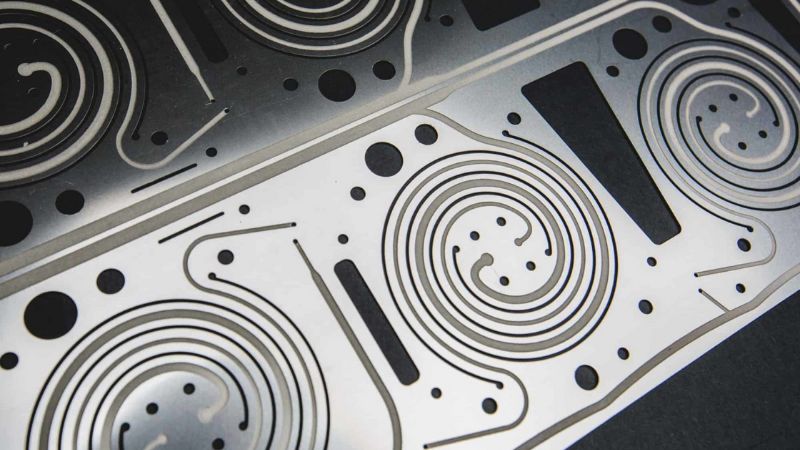
The Advanced Metal Etching is a well-known brand in providing metal and laser technology services. The brand focus is to provide flexible, high-precision solutions. They mainly target the chemical and decorative industries.
The company provides chemical, electrolytic, and laser etching for thin metal sheets. They provide the client with the option to choose the right material. Well, the brand also provides design consultation and prototyping.
Their quality control ensures consistent feature sizes and minimal edge burrs. All their engineers work with a partner experienced in high-detail applications. However, they provide slower services for large-area projects.
3- Conard Corporation

The Conard Corporation is not new to the metal etching services industry. They have a decade of experience in photochemical etching. Their vision focuses on precision, reliability, and developing customized solutions.
Mainly, they offer services for electronics, aerospace, and industrial components. The photochemical and electrochemical etching are the minimum services. They also support multi-step etching, plating, and secondary finishing.
Their attention to detail ensures micro-scale patterns with tight tolerances. Thus, the brand delivers highly accurate, repeatable, and reliable production. However, their process may require a longer setup time for complex designs. Furthermore, they charge a higher price for a customized design.
4- PMA Photometals

The PMA Photometals supplier mainly focuses on high-precision photochemical etching. The brand was established on a quality-oriented vision. Later, they upscale and offer services to the aerospace and chemical industries.
Their services include photochemical etching, prototype support, and multi-layer etching. Mostly, their engineers use copper, brass, stainless steel, and aluminum. Their additional services include laser marking and post-etch finishing.
If you work with this manufacturer, they ensure precision and flexibility across all materials. You can get a complex design in a thick metal sheet with tight tolerance. But the brand is better than TMNetch.
Frequently Asked Questions
What can I use to etch metal?
You have the option to use a different type of chemical in etching. Generally, ferric chloride is the most common chemical used by various brands. This etching solution reacts immediately in a controlled way. So, your pattern on the metal sheet is accurate.
Can I do etching at home?
Absolutely yes, you can do etching at home by using various methods. You have the option to use drypoint etching with recycled plastic. Furthermore, you can also use electrical etching on metal with proper safety gear.
How to write permanently on metal?
To write permanently on metal, first of all, select the professional method. You can use laser engraving and acid etching. For a less permanent solution, you can use a permanent marker and paint pen on a metal sheet.
Conclusion
To sum up, metal etching is all about engraving a complex pattern on a metal sheet. You don’t face any uneven surface or burr edges at the end of the project. Technically, the etching process uses different methods to ensure pattern accuracy and precision.
There are different well-known manufacturers in the market that claim to provide quality services. You have to focus on certain things before selecting your etching partner. Make sure the brand is certified and cost-effective for you. Furthermore, check their online positive reviews and past experience in similar projects. Thus, you are in a better position to make a decision.
